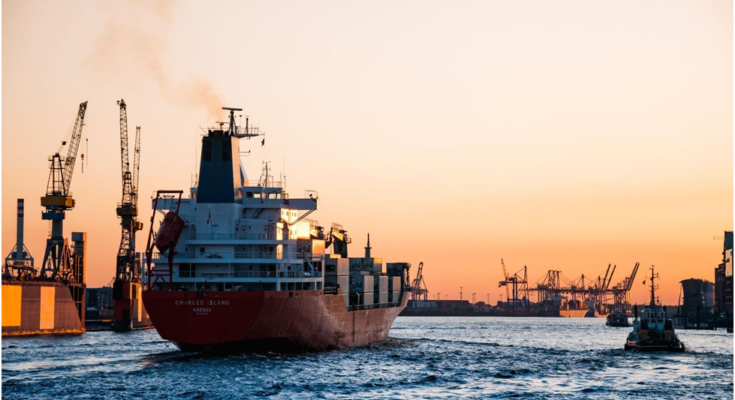Big data and data analytics have changed how we live. With optimized projections and brand-new insights, we can now have more precise answers that create better, more robust solutions. We can see this everywhere, from the medical industry to SMEs.
It’s even changing how seafarers and shipping companies navigate our oceans and seas. With weather routing technology, they can use real-time weather data to determine the best course for a ship’s voyage. But what is weather routing, and why is it so important? Below, we’ve listed everything you need to know about this technological breakthrough!
What is Weather Routing?
Standard weather routing involves choosing the shortest distance between the starting point and the destination. That definition definitely makes it sound easy. However, seafarers must also consider numerous data points, such as environmental aspects like wind speed, currents, and wave height. They use all of this data to ensure that the route they take is the best or most effective one.
By using the right marine weather routing software, seafarers can achieve the combined goals of increasing safety and reducing voyage costs.
Weather routing systems examine the current and forecasted weather along the ship’s ideal passage. The proposed route can then be modified according to weather conditions and other factors, including vessel characteristics and cargo requirements.
Although navigators can always plan the best course, once a ship departs port, conditions can change quickly! That’s why onshore staff must receive detailed and up-to-the-minute weather information. With this real-time knowledge, navigators can adjust routes as necessary.
The goal of weather routing is not just to avoid all bad weather. At the end of the day, it helps seafarers find the most efficient route that cuts down on fuel use without sacrificing anyone’s safety.
Who Uses Weather Routing Technology?
Both onboard and onshore users use weather routing software. The captain and senior crew members can employ it to analyze weather and ocean forecasts instantly. They can also utilize it to plan their journeys, including creating and updating comprehensive port itineraries.
Onshore users like operations, performance, and fleet managers also use weather routing software. Operations managers will consider route modifications to inform and improve freight schedules. This may include calculating and recalculating optimal routes.
Additionally, performance and fleet managers can benefit from voyage analysis as it helps in assessing pre- and post-voyage performance.
How Does Weather Routing Work?
The process begins with a forecast of weather conditions along the entire route. Using these predictions, ship navigators will then determine which conditions will affect the performance of the vessel and its various parts. After that, they will assess how the ship will be affected by the current conditions and choose between two possible routes.
Navigators on ships can determine the most efficient route by examining the numerous aspects that affect the ship’s performance. Once they receive feedback from their computers about how long it will take to finish their journey, they can adjust the ship’s course accordingly.
What Are the Advantages of Using Weather Routing Technology?
Weather, including currents, waves, wind, and swell, has been proven to affect a vessel’s performance by 50% to 80% and cost thousands of dollars in additional fuel consumption. However, this wouldn’t be a problem with weather routing because of the following reasons:
Weather Routing Ensures Safer and More Efficient Travels
The sea is never safe, not when the weather can easily affect its waves and currents. That’s why tools and technology that can help shipping businesses avoid catastrophic outcomes are essential.
In fact, up to 50% of all vessels lost each year are due to foundering, which occurs when a ship sinks due to weather, leaks, breaking in two, etc. This data supports the view that when at sea or even in port, severe and extreme weather conditions pose the greatest risk to ships, their owners, and their crews.
This is where weather routing comes in. Vessel owners can better safeguard themselves and their crew members by knowing when bad weather is headed their way. With the data that weather routing software provides, they can take steps to ensure the safety of the crew members and cargo before a storm arrives.
Weather Routing Reduces Costs
Another advantage of weather routing is that it lowers the cost associated with navigating around high-risk areas. While the most important consideration when traveling is safety, shipping businesses must also consider costs.
Ships can save money by using weather routing software to reduce their time at sea before returning to their home port. This allows the ship’s owner to send out fewer ships, saving him money. Less money spent on fuel means greater savings for fuel companies!
It doesn’t stop there, though! Shipping companies that use weather routing to optimize their routes can also improve their margins by lowering insurance costs, saving on crew overtime pay, and avoiding additional charges from port operators.
Weather Routing Increases Productivity
It should be no surprise that ships that navigate safely and efficiently through weather routing can transport goods faster and longer distances. As a result, the shipping company that owns the vessel will enjoy higher profits from its commercial operations due to less downtime.
Instead of wasting time dealing with weather delays, they can concentrate on improving their business. On top of that, the ship’s crew will also be able to work more effectively as they won’t have to waste time waiting for bad weather to pass.
Weather Routing Helps Companies Meet Their Decarbonization Targets
3% of global emissions are attributable to the shipping industry. Less fuel doesn’t just mean less money spent. It also lowers a shipping company’s carbon footprint.
During their operations, ships produce a significant amount of CO2. The good news is that using weather routing technology can reduce this amount.
Vessels can go farther without emitting as much greenhouse gas by avoiding areas where severe weather is predicted. With this in mind, shipping companies can contribute to environmental sustainability by optimizing their travel.
Weather Routing Provides Better Service To Clients
Shipping companies typically cater to many clients. These clients from all around the globe rely on ships and vessels to bring cargo where it needs to go.
Because weather routing boosts efficiency and productivity, these shipping companies can offer top-notch customer service. For instance, if a shipping company is aware that a particular region is prone to severe weather, it can inform its clients who need to carry goods through that area.
This enables companies to prepare in advance and keep clients from experiencing unpleasant surprises.
Weather Routing For Better Shipping
Understanding and avoiding severe or heavy weather is the most crucial element for safer, more productive, and more cost-effective navigation. It’s a good thing these goals are achievable with the right weather routing strategies and technology. For more interesting articles about business and technology, check out Guest Article House today!




